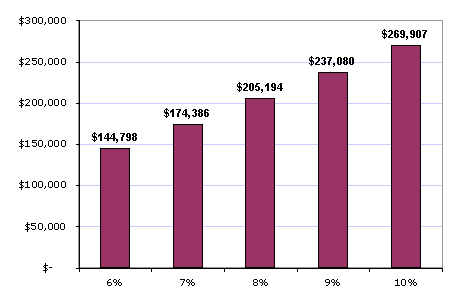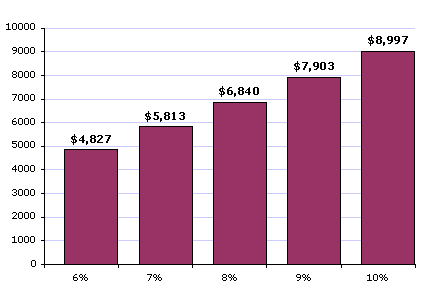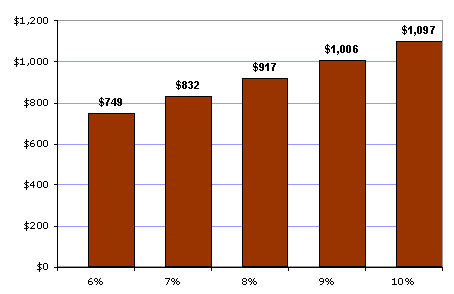 
 字體:小 中 大
字體:小 中 大 |
|
|
||||
| 2019/03/21 01:00:00瀏覽756|回應0|推薦3 | ||||
How to Buy a House: The Loan (Mortgage) A mortgage loan or, simply, mortgage is used either by purchasers of real property to raise funds to buy real estate, or alternatively by existing property owners to raise funds for any purpose, while putting a lien on the property being mortgaged. The loan is "secured" on the borrowers property through a process known as mortgage origination. This means that a legal mechanism is put into place which allows the lender to take possession and sell the secured property ("foreclosure" or "repossession") to pay off the loan in the event the borrower defaults on the loan or otherwise fails to abide by its terms. The word mortgage is derived from a Law French term used in Britain in the Middle Ages meaning "death pledge" and refers to the pledge ending (dying) when either the obligation is fulfilled or the property is taken through foreclosure. A mortgage can also be described as "a borrower giving consideration in the form of a collateral for a benefit (loan)". (Well talk more about how to get a loan in a minute.) The bank loaning the money is the lender. The amount you pay to the bank each month is your mortgage payment. The rate of interest on the loan is the mortgage rate (or the interest rate). If you dont make your mortgage payments then the bank will repossess the house. Can You Buy A House With Cash And Then Get A Mortgage? 1. Why cash is still king in competitive real estate markets 2. A new buying strategy: cash first, mortgage later There are downsides, however, to this tactic. “You’re using marketable securities as collateral,” Crowley warns. “This means that the buyer and lender have agreed that the collateral is worth a certain amount, and that amount can change without notice.” 3. What to consider before liquidating your assets This buying strategy isn’t right for everyone. “Use the same wisdom you’d apply to any other purchase,” Crowley advises. “Make decisions with facts and not emotions and understand your options thoroughly.” Instead of liquidating your assets and putting a lot of pressure on yourself to purchase a home, consider a new timeline for your homeownership goal — perhaps set a goal to buy in five years instead. By then, you’ll have saved up more cash and may not need to liquidate existing investments. Second, the real estate market could change during that time — making these extreme measures unnecessary. But if you do your research and determine cash first, mortgage later is something you want to do, you need to know how it actually works. After all, not many buyers are trying the strategy, simply because they don’t know it’s an option. 4. How to buy with cash first and get your mortgage later Of course, you need to be careful when dipping into retirement savings, like 401(k) and IRA accounts — it’s not always a wise move. You’ll be penalized for withdrawing funds before retirement age, so include those fees in the total cost of your mortgage if you want to fully pay back those accounts. And an important note: Crowley points out that trying to use your existing assets this way is not for people who want to borrow money they don’t have. The cash first, mortgage later option is intended for people who want to employ capital that they already have in the most efficient way, he says. 5. More factors to consider An understanding of marketable securities is a prerequisite for this buying strategy. Crowley recommends finding the right lender too. Most mass-market lenders won’t be able to support the level of complexity required to help with the process from start to finish. “Most major brokerage firms offer these options. Some smaller firms do as well,” Crowley says. “Even some independent financial planners have access to such channels.” The bottom line? Liquidating your assets to purchase a home with cash and delaying financing by taking out a mortgage after you buy is an interesting strategy — but not one that’s right for everyone. It can help keep your offer competitive when you’re trying to purchase a home, but you shouldn’t just liquidate all your assets to become a cash buyer. Use money you already have as leverage, and don’t try this strategy simply because you don’t currently have enough cash to put money down on a home or to buy a home outright. Have you been a cash buyer for a house, then taken out a mortgage? Tell us about your experience in the comments! How to Buy a House The Basics of Buying a House. Basics The loan you get from the bank is called a mortgage, also called a note. (Well talk more about how to get a loan in a minute.) The bank loaning the money is the lender. The amount you pay to the bank each month is your mortgage payment. The rate of interest on the loan is the mortgage rate (or the interest rate). If you dont make your mortgage payments then the bank will repossess the house. (This is called foreclosure.) Then theyll sell it to make sure that they can recoup the money they loaned to you, and that you didnt pay back. The number of years it takes to pay back the loan is called the term, which in the U.S. is either 15 or 30 years. There are pros and cons of each:
How do you choose between the two? If you want the most flexibility then take the 30-year loan. You can still save on interest and pay your loan off early by paying the bank a little extra each month (or whenever you can afford it). The difference is that with a 30-year loan you get to dictate how much extra you want to pay, and therefore how much you want to save. With a 15-year loan you have to make bigger payments every month whether you like it or not. On the other hand, if you can definitely afford the payments on a 15-year loan, and you dont trust yourself to make extra principal payments on a 30-year loan, then take the 15-year loan and enjoy the fact that youll save a bundle of interest and pay off the loan in half the time, without having to do anything special.
Paying back a mortgage You pay back your loan by making a payment every month. At closing youll usually have the opportunity to sign a form which lets the bank draft the payment automatically from your bank account each month, which is very convenient. If you decline to do the auto-draft, then its your responsibility to make your payment each month on your own initiative. The bank wont send you a monthly bill. Part of your payment goes towards the principal (the amount the bank loaned you), and part of it is interest (the banks profit from lending you money). So when the bank loans you $100,000 you pay them back that $100,000 and then some. If you only had to pay back the same $100,000 they gave you then there wouldnt be anything in it for them. Thats why they charge interest. Even though part of your monthly payment is for principal and part is for interest, you make only one payment to the bank each month, and that payment amount stays the same for the life of the loan. You dont have to know how much of your payment is for principal and how much is for interest, and you generally dont need to know. At the end of the year the bank will send you a statement for your taxes (since youll get to deduct the interest you paid if you itemize), and the statement will tell you how much interest you paid over the year.
Mortgage interest Interest is the fee you pay for the privilege of borrowing money. Its how the bank makes a profit by giving you a loan. Naturally, the lower the interest rate, the better for you, because youll pay less total interest. And since the interest is part of your monthly payment, a lower interest rate means a lower monthly payment, too. Finally, a lower interest rate means you can afford a more expensive house. (Lets say youve got $1500/mo. to pay towards a home. When less of that $1500 goes to interest, more of it can go towards paying off the cost of the home, which means you can afford a pricier house.) So when you get to the point where youre shopping for a loan, youll try to get the lowest rate possible. Incidentally, in June 2012, U.S. mortgage rates dropped to a record low of 3.66%, the lowest rate since 30-year mortgages started in the 1950s. (MSNBC) HSH has a list of historical mortgage rates since 1986. Maybe you remember percentages from high school, so you figure that if you have a $100,000 loan at 6% youll be paying the bank back $106,000? Nice try, but that would work only if you paid back the loan after one year. The 6% rate is an annual rate, so youre going to pay that 6% every year. (You wont pay quite as much as $6000 x 30 though, because you pay interest only on the outstanding balance, not the original loan amount, and as time goes by your balance gets lower.) The actual amount of interest you pay each month is the current outstanding balance, times the interest rate, divided by 12. (e.g., For $150,000 left on a loan at 6%, means youd pay $150,000 x 6% ÷ 12 = $750 in interest for that month.) If your eyes just glazed over then dont worry about it, its not important to know the math now, I just provide the details for those who want to understand everything completely. Heres all you need to know:
Here are some pretty pictures to demonstrate the first two points. Well assume a $125,000 loan for 30 years at various interest rates. Total Interest Paid Over the Life of the Loan So even at a very low interest rate of 6%, youre paying $145,000 in interest on a $125,000 loan. So you borrow $125,000 and pay back $270,000 — more than double what you borrowed! Its even worse if you have a higher interest rate. Note how going from a 6% to 10% interest rate means you pay an extra $125,000 over the life of the loan. So the total youd pay on a $125,000 loan at 10% would be $125,000 principal + $269,907 interest = $394,907! Quite a lot to pay back for a $125,000 loan, huh? Average Yearly Interest ($125,000 loan, 30 years) Here again, going from 6% to 10% interest means you pay an extra $4000 on average in interest each year! How the interest rate affects the monthly payment Types of loans For the most part, you dont have to concern yourself with the difference between the three main kinds of loans (Conventional, FHA, and VA loan). Its your lenders job to try to pick the best loan for your needs and qualifications, not yours. But since youll hear these terms bandied about frequently, you might want to know what they mean, so here ya go. Conventional. This is a fancy word for "normal". A conventional loan is just a regular, normal loan. If your credit is good and you can swing at least a 5% down payment, then its better than an FHA loan, since the fees are a lot lower, and theres less red tape. FHA. The U.S. government offers the FHA loan program to make home-buying easier. These loans are generally easier to qualify for, and can be had for down payments as low as 3.5% (vs. 5% for conventional loans). The loans arent actually made by the government, theyre still made by the banks; the feds just guarantee part of the loan if you default, which means that they pay the bank if you fail to make your payments. Dont get excited about the government making your payments for you, though — if you fail to make your mortgage payments the bank will still take the house back from you. The feds pays the bank after the bank has already repossessed your house. Note that not all sellers will agree to an FHA loan, because theres a little more red tape involved. Also, one flavor of FHA loans is the FHA 203k, which will let you borrow any money needed for additional repairs or modernization. For example, if youre buying a $170k home, and it needs $30k of repairs, you could borrow $200k through an FHA 203k. In fact, the FHA 203k is usually the only way you can borrow a lot of money for initial repairs. The downside is that the interest rate on such loans is about one percentage point higher. VA. VA loans are an option for veterans, and its possible to put 0% down on one. Just like with FHA loans, the VA itself doesnt lend money, it just guarantees part of the loan so lenders feel comfortable lending the money. VA-guaranteed loans can be combined with second mortgages (which is when the bank makes the main loan covering most of the price of the house, and the seller makes a separate loan to the buyer for the rest of the price.) VA loans can be assumed by any future qualified buyer, so your hands arent tied if you need to sell — you can sell to anybody, not just another veteran. 2胎, 二胎, 二胎代書, 二胎利率, 二胎房貸, 二胎貸款, 信用貸款, 信貸, 借錢指南, 土地貸款, 小額信貸, 建地貸款, 房屋二胎, 房屋貸款, 房貸二胎, 房貸增貸, 民間二胎, 貸款, 農地借錢 |
||||
| ( 知識學習|商業管理 ) |














